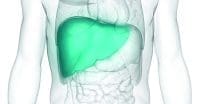Shantae Demano*, a 62-year-old woman with a history of recent total left knee surgery, is admitted to the ICU with sepsis and an infection of the knee, which shows bruising and skin discoloration. She had been prescribed I.V. vancomycin after her surgery.

Critical Care Advisor
"*" indicates required fields
*By submitting your e-mail, you are opting in to receiving information from Healthcom Media and Affiliates. The details, including your email address/mobile number, may be used to keep you informed about future products and services
Critical Care
Hepatitis C: Updates and beyond
In October 2021, the Infectious Diseases Society of America (IDSA) and the American Association for the Study of Liver Diseases (AASLD) updated their hepatitis C virus (HCV) guidelines with simplified pathways to extend treatment options and help providers remove barriers and accelerate virus eradication.
Moral distress and end-of-life care
Pediatric malignant hyperthermia
Daniel Sanchez*, an 8-year-old boy, arrives in the pediatric recovery unit after an appendectomy. You note that his electronic health record (EHR) indicates Daniel weighs 57 lbs (25.8 kg) and that he’s in good overall health with no significant medical history. After he’s extubated, his parents enter the room.
Do polio and smallpox present a threat?
The 2022 reemergence of polio and smallpox in the United States has many healthcare providers wondering if they should prepare for a potential outbreak. Nurses need to know what lies ahead and how best to protect themselves and their patients if they encounter either of these viruses in their practice. (See 2022 outbreak.)
Subarachnoid hemorrhage
Karen Thompson*, a 55-year-old woman, arrives in the ED via ambulance. She reports the worst headache of her life and sensitivity to light. She has no significant medical history.
The stroke activation team completes the National Institute of Health stroke scale and orders a computed tomography (CT) scan.
Recognizing oncologic emergencies
The American Cancer Society estimates that in 2023 over 1.9 million individuals will receive a diagnosis of some form of cancer. Many will seek care for oncologic emergencies related to chemotherapy, radiation treatment, biological therapies, local tumors, and metastases.
Resuscitation after cardiac surgery: Best practice recommendations
According to the Society of Thoracic Surgeons, 0.7% to 8% of patients who’ve had cardiac surgery suffer from cardiac arrest. Ventricular fibrillation (VF), the most common cause, accounts for 25% to 50% of cardiac arrests. VF treatment begins with defibrillation—up to three shocks at 150 joules.
Acute kidney injury: A nursing challenge
The renal system comprises the kidneys, ureters, and urethra, which maintain homeostasis via filtration and excretion of waste products, participate in acidbase balance, produce renin for maintaining hemodynamics, and produce erythropoietin to stimulate red blood cell production.
Heart failure management: Updated guidelines
Heart failure (HF), a clinical syndrome that results from changes in the cardiac structure, leads to impaired ventricular filling or reduced blood ejected with each heartbeat. Primary prevention and management require that nurses have a clear understanding of the causes, risk factors, and pathology of HF as well as their role in patient-centered management based on the 2022 American Heart Association, the American College of Cardiologists, and the Heart Failure Society of America guideline for the management of heart failure.










